A few months ago I was enjoying the wines of Sicily, and last week I was all over Campania. I must say that I enjoy drinking up and down the Italian boot as there is always something something new to discover. And while I know exactly where Umbria is (I could completely fill a blank map with every region – thanks Society of Wine Educators), I can’t say that I’ve had much experience with the wines of Umbria. Located in central Italy, Umbria is bordered by Tuscany to the west and Marches to the east. And while its landscape and climate is similar to that of Tuscany, it is a bit hotter and drier due to the fact that it is landlocked and doesn’t receive the maritime influence that Tuscany does. Also, having Tuscany as a neighbor often means that the region is overshadowed.
Known as the “Green Heart of Italy” with its lush green hills dotted with medieval hill towns, Umbria is known for wine as well as for olive oil and truffles.
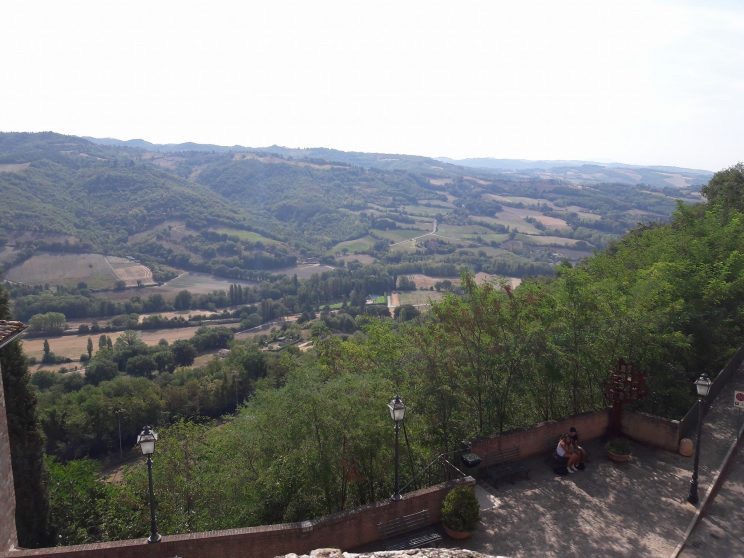
Umbria’s best known white wine is its Orvieto DOC (there are several other DOCs) which is made with Trebbiano and Grechetto. Umbria is also home to two DOCG red wines – Sagrantino di Montefalco, which is made from the tannic, thick-skinned Sagrantino grape and Torgiano Rosso Riserva, which is made with a minimum of 70% Sangiovese. But of course, that just barely scratches the surface as the region offers a wide array of varieties, styles, and price points.
I had the pleasure of a fantastic introduction to the wines of Umbria from Terre Margaritelli by tasting several of their wines. Terre Margaritelli is located in the heart of Umbria, between Perugia and Assisi in the famous wine area of Torgiano, which is a small hill town that sits about 650 feet above sea level. As sustainability is at the heart of what they do, Margaritelli’s entire production is certified organic. I love that organic winemaking is on the upward swing and I’ve seen a great deal of such production throughout Italy.
Margaritelli intentionally keeps production small to maintain quality (maximum production is 100,000 bottles) and sells much of its grape production to other winemakers. While Trebbiano and Grechetto are the primary whites and Sangiovese and Canaiolo are the primary red varieties grown, the estate produces 14 different varieties. Interestingly enough, Margaritelli also owns a wood company and is a leading wood-products manufacturer. They make everything from railroad ties to wood floors. Versatility is a great thing y’all.
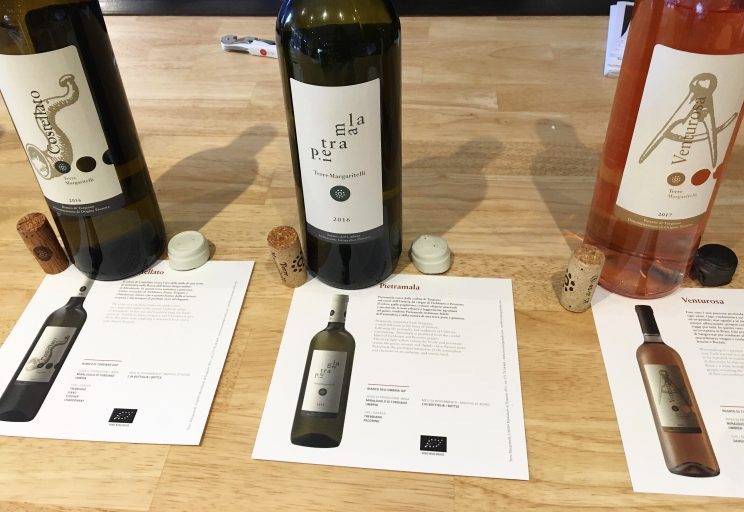 2017 Venturosa Rosato di Torgiano
2017 Venturosa Rosato di Torgiano
Recently bottled, the 2017 Rosato was quite the aromatic “Pink Adventure.” What can I say? I loved this wine. Crafted from Sangiovese, this dry Rosato offered up beautiful, fresh strawberry and floral notes along with lively acidity. But there was also some minerality and depth of flavor not always present in Rosés. The wine is made using the Pressurage or direct press method which means there is short skin contact during the pressing of the grapes which results in a light, pale wine that offers freshness and clean fruit flavors. This is the same method used in Provence for its pale hued Rosés.
2016 Pietramala Bianco Dell’Umbria
Named for a soldier and comprised of Trebbiano and Pecorino, the wine is light-bodied with bright, zippy acidity anchored by grapefruit and herbaceous aromas as well as a tinge of minerality. The Pecorino variety is so named as its grown on the site where the Pecorino sheep that make the cheese of the same name graze. Allegedly the grapes are a favorite snack of the sheep. Lucky for us they left us some!
2016 Costellato Bianco di Torgiano
A blend of four varieties – Trebbiano, Fiano, Viognier, and Chardonnay – the Costellato still has the crispness of the Pietramala, but is a bit fuller bodied. Each variety in the blend is vinified separately. The crispness highlighted by lemony citrus notes was also accompanied by rich melon and apple flavors. Great balance of fruit and acid.
2016 Greco di Renabianca Bianco Dell’Umbria
Also named for a soldier, the Greco di Renabianca is 100% Grechetto, which is one of the region’s most well known white varieties. The wine spent three months aging in French oak barriques. Being in the wood business, quality oak is very important to Margaritelli and the oak for this wine came from the specifically selected Bertranges forest in France. The kiss of oak gives the wine a bit of nuttiness to go along with fresh fruit and results in a wine that deftly balances power and graceful floral notes.
 2016 Roccascossa Rosso Dell’Umbria
2016 Roccascossa Rosso Dell’Umbria
An intense, deep ruby in the glass, the Roccascossa was a lovely red comprised of Sangiovese and Cabernet Franc. While the Cabernet Franc was apparent on the nose (a bit of the green, vegetal aromas), the palate was unmistakable Sangiovese with its freshness and hallmark high acidity. Fresh cherry, spice, and a bit of earth. Well balanced and quite enjoyable.
2016 Miràntico Rosso di Torgiano
The Miràntico, a Rossi di Torgiano DOC wine, is a blend of the Sangiovese, Malbec, and Canajolo and is a beautifully made. Each variety does its part enhance the resulting blend with the Sangiovese adding sharp and acidic qualities, the Canajolo offering up a tinge of bitterness and structure, and the Malbec bringing it all together by adding some smoothness and sweet ripe fruit. Geranium, cherry blossoms, and a hint of black pepper. A quite elegant wine with a lengthy finish that spent 6 months in French oak from the renowned Bertranges forest.
2013 Freccia degli Scacchi Torgiano Rosso Riserva
The final wine was the Freccia degli Scacchi which is comprised of 100% Sangiovese. Like neighboring Tuscany, Sangiovese does very well in Umbria, where it is the most produced variety. This Torgiano Rosso Riserva is a DOCG – one of the first in Italy – and was aged 24 months in French oak and 24 months in the bottle. The grapes are sourced from higher elevation areas in Torgiano which contributes to the intense flavors and high acidity. This one is a brilliant ruby color in the glass with the the hallmark floral aromas (roses and violets) for which Sangiovese is known along with red cherry fruit and a bit of leather and cocoa. And while the alcohol level was certainly getting up there at 15%, it certainly didn’t drink that way.
With the expection of the Freccia degli Scacchi which comes in around $20, all of the Margaritelli wines can be had for around $10 or less. Amazing value for well-made, organic wines. Cheers y’all!

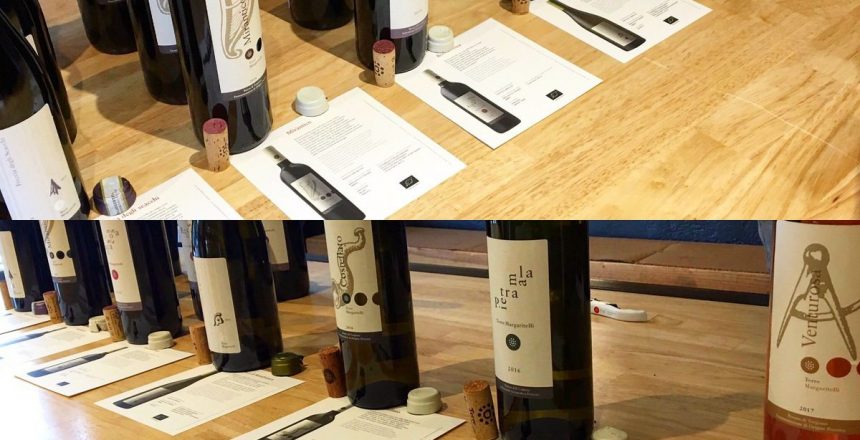
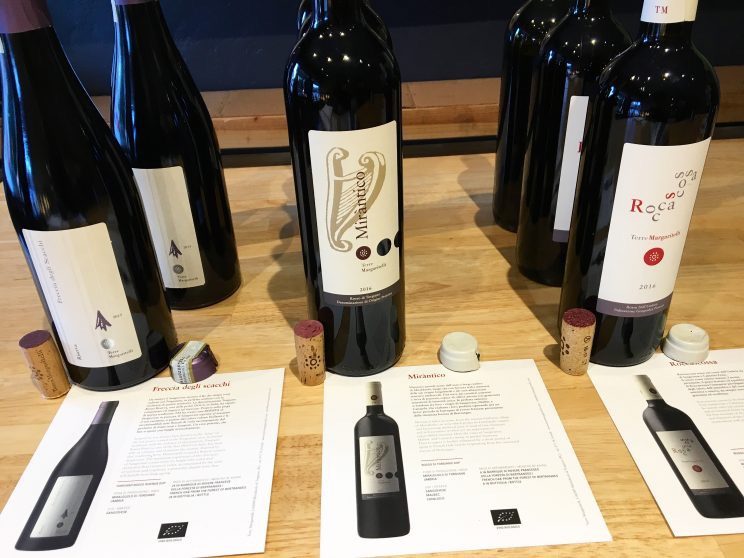

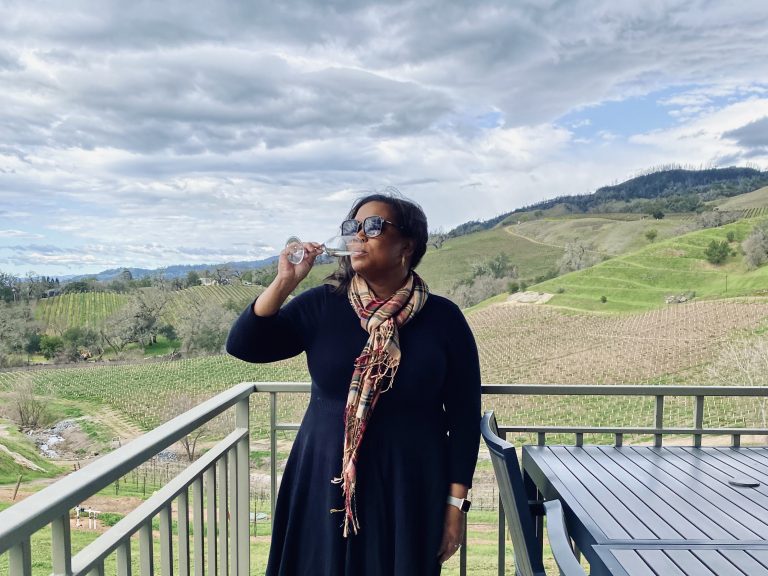


No Comments